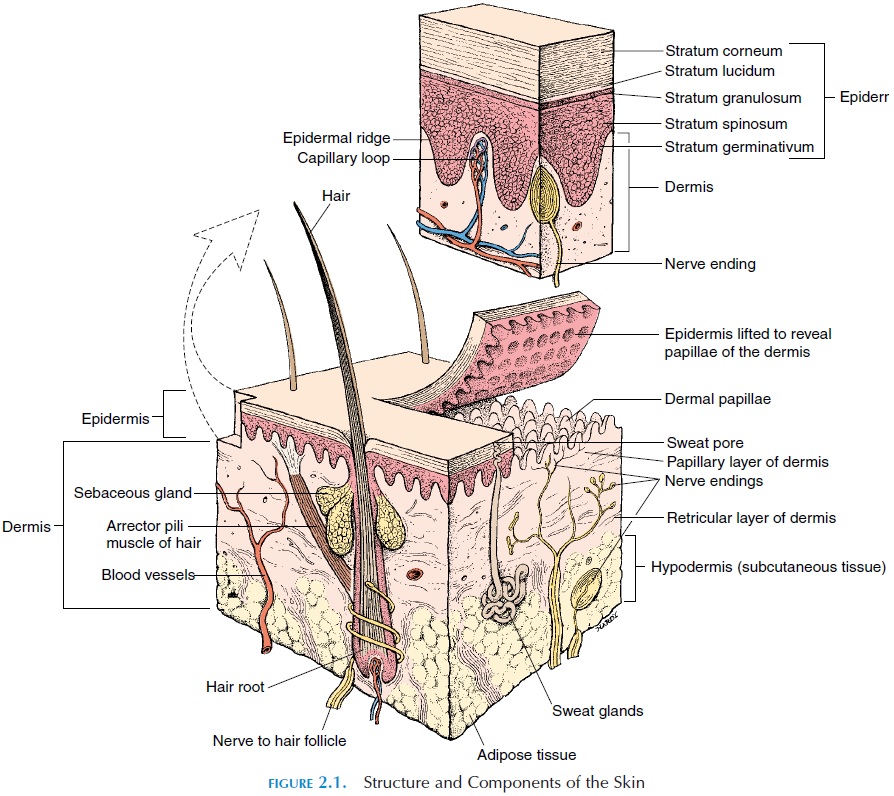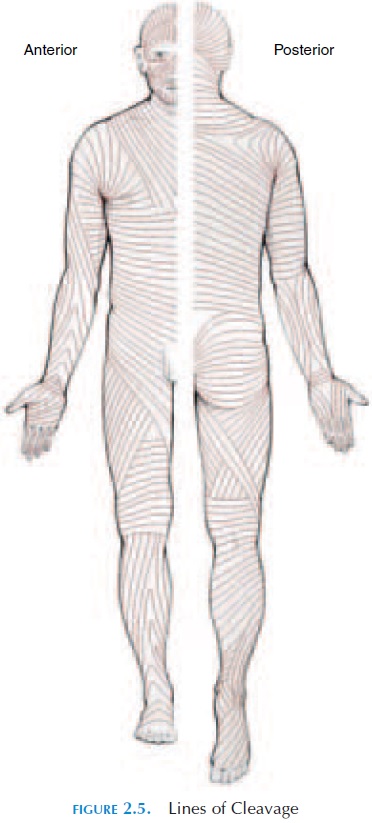Chapter: The Massage Connection ANATOMY AND PHYSIOLOGY : Integumentary System
The Dermis - Structure of the Skin
THE DERMIS
The dermis is the connective tissue layer that lies deep to the epidermis. It contains protein fibers and all the cells in the connective tissue proper, such as fi-broblasts, macrophages, adipose cells, and mast cells. It supports the epidermis and is the primary source of its nutrients. The dermis contains loose connective tissue that lies closer to the epidermis (papillarylayer, or pars papillaris) and dense irregular con-nective tissue deep to the papillary layer (reticularlayer, or pars reticularis). Collagen and elastic fibersimpart strength, elasticity, and extensibility of the skin. The dermis is vascular and contains a network of blood vessels. Lymphatic vessels are also present in abundance in this layer. Accessory structures, such as sweat glands and hair follicles, are located in the der-mis. In addition, the dermis contains numerous nerve endings and nerves that convey various sensa-tions from the skin to the central nervous system.

The consistency and texture of skin is largely de-termined by the water content and the collagen and elastic fibers in the dermis. The water content helps maintain the flexible and resilient properties of the skin, or the skin turgor. The collagen and elastic fibers are arranged in parallel bundles. The orienta-tion of the bundles allows the skin to resist the stress placed on it during movement. Although the elastic fibers stretch and come back to their original length, the collagen fibers are tough, resisting stretch but al-lowing twisting and bending.

Figure 2.5 shows the lines of cleavage of skin. This is the pattern of collagen and elastic fiber bun-dles established in the dermis that follow the lines of tension in the skin. The lines of cleavage are of im-portance, as injuries to the skin that are at right an-gles to these lines tend to gap because the cut elastic fibers recoil and tend to pull the wound apart. Heal
Related Topics